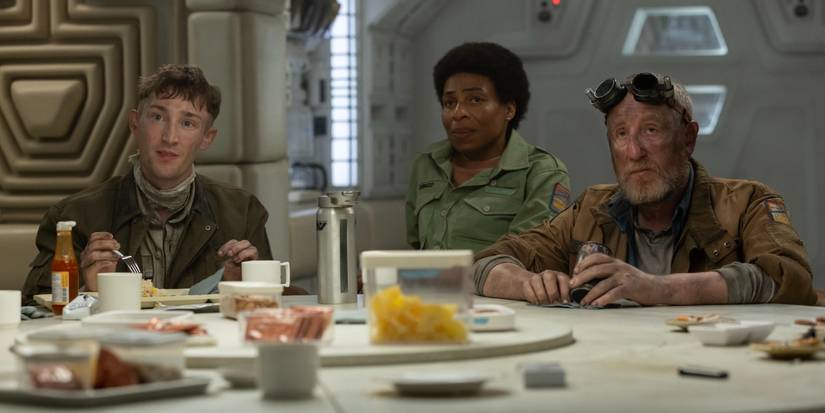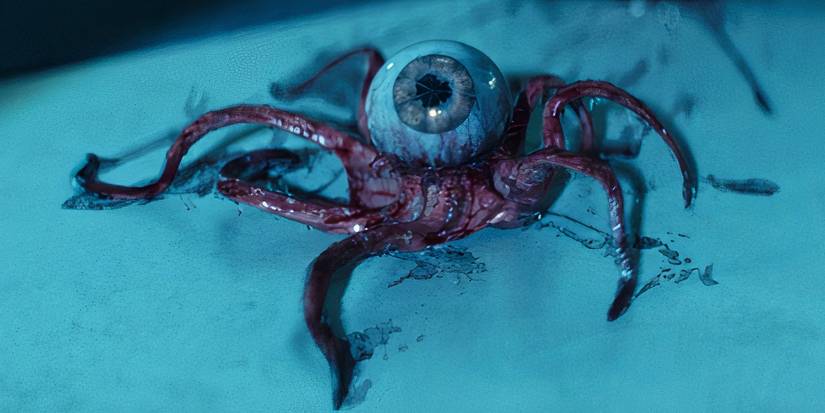Editor’s note: The below interview contains spoilers for Alien: Earth Episode 5.
In the wake of last week’s revelation that Wendy (Sydney Chandler) can seemingly talk to xenomorphs, you might be under the impression that Noah Hawley‘s FX series Alien: Earth would continue telling its story in the present day. Instead, Episode 5, “In Space, No One…,” written and directed by Hawley himself, jumps back to the events that happened onboard the doomed Weyland-Yutani ship named the Maginot — which we only saw the final few moments of in the premiere. As the crew’s harrowing final hours play out, a number of shocking revelations emerge, including the fact that Prodigy’s founder, Boy Kavalier (Samuel Blenkin), seemingly played a role in the Maginot’s crash from the beginning.
Ahead of the premiere of Episode 5, Collider had the opportunity to circle up with Hawley to discuss his efforts in crafting what could arguably be described as his take on Ridley Scott‘s Alien. Over the course of the interview, which you can read below, Hawley breaks down the episode’s biggest twists and turns, including that unexpected Boy Kavalier reveal, why we see the eyeball alien face off with a xenomorph, playing up the episode’s biggest moments of tension with handheld cameras and purposeful cinematography, and more.
COLLIDER: I did want to clarify a detail with you, because I didn’t see this anywhere in the credits: who did you get to voice MOTHER? It sounds an awful lot like Sigourney [Weaver], and I don’t know if that was intentional or not.
NOAH HAWLEY: It’s not. It’s not Sigourney. One of our editors, Robin [August], is the voice of MOTHER, and it started out as… in post, someone’s got to say it, and so she temped in, and then, of course, we tried to cast the voice from voice performers, and no one was as good as her. So she’s now in the show as well.
I know you’ve directed before, but in terms of approaching this episode, was there anything creatively or technically in this episode that you hadn’t done in any previous show?
HAWLEY: Yeah, I did a lot more handheld. I don’t tend to like handheld cameras. It’s just… my aesthetic is not that way, but it’s a tool, and the more things get out of control, the more using handheld makes things feel out of control. It’s literally a feeling that you get. So in that scene where Bronski’s dead, and they run in, and Zaveri’s trying to figure out what to do, and how big do these things get… it feels like their emotional state is reflected in the energy of the camera. So I definitely used that more.
Obviously, I need creature setup and CG, etc. It’s all just a scaled-up version of problems I’ve had to solve before. In case you can’t tell this about me, I like stories where there are a lot of moving pieces on a collision course. I will say, standing on a set watching a man jump onto a xenomorph and try to bite it, I’ll never forget that moment. That moment felt truly insane to me, as I’m sure it does to the audience.
Noah Hawley on Crafting the Suspense of Episode 5’s Water Bottle Sequence
“I can make myself feel any emotion except fear…”
To talk about moving pieces, the water bottle sequence is such a good example of how this episode really builds the tension — to the point where you almost can’t focus on the dialogue because you keep thinking about when Karen Aldridge is going to take a sip from that water bottle. There’s even that moment where the camera just slowly pushes in on it to remind you.
HAWLEY: Yeah, every time you see them move across, there’s a cue. Well, it’s an interesting thing. I don’t know if I’ve said this to you before, but as a filmmaker, I can make myself feel every emotion except fear, because I always know what’s gonna happen. And so, for a filmmaker to build suspense, you have to have feedback. At a certain point, I’ve got to show it to someone.
I know, intellectually, “There are a lot of moving pieces here. They’re in this big room. They’re having this meeting. She’s talking about things. What’s the plan?” And I’m pushing in on this water bottle, and I’m counting on everyone to still be in the, “Who’s gonna drink from the water bottle?” mindset, but I can’t take it for granted, so cinematically, you have to keep them there, and then in the moment where Malachite drinks from it, you’ll notice we kind of do a triple cut — where he picks it up three times, and it really lands, the impact of that moment.
This is the episode where we learn that Boy Kavalier has had a hand in the Maginot crashing, at least in terms of getting his hands on these specimens. This was all really orchestrated from the beginning. When did that idea crystallize in your mind?
HAWLEY: That was sort of in the storytelling process. What I’ll say is, I think one of the things that we clearly reveal by the end of the season is “Genius? Sure. Mastermind? Maybe not so much.” There’s a level of impulse control problems and hubris, and he’s clearly a guy who’s never failed at anything, so he doesn’t think that failure is even an option.
This idea was that he clearly had somebody at Weyland-Yutani who told him there was this ship that was coming back, and he spent a lot of money to be able to communicate with it and found the guy. All along, he’s thinking, “Wile E. Coyote, super genius.” And then you’re like, “Yeah, but play it out, man. That ship’s gonna crash, and how do you know you’re gonna contain the creatures?” But you can’t convince the genius that they’re doing something dumb.
Noah Hawley Breaks Down the Eyeball Creature vs. Xenomorph Fight in ‘Alien: Earth’ Episode 5
“It’s not like the shark and the bear are gonna get along.”
You mentioned the scene briefly, but the moment when the engineer is being controlled by the eyeball alien and attacks the xenomorph — one might assume that these creatures could be working in tandem, but instead, they’re at odds.
HAWLEY: Apex predators are all… It’s not like the shark and the bear are gonna get along. What we learn over time about the eye is that it might be more of a long-term thinker than some of the other creatures and more of a strategist in some ways. It’s not necessarily collaborative, but it knows how to seize an opportunity, and that when there’s someone pointing a gun at it, and it knows there’s a xenomorph in the next room, it might say, “Oh, he’s in here.”
Whose idea was it to have the eye crawling over the lens in that one shot?
HAWLEY: Yeah, that was me. You make a thousand and one decisions at every stage. I think someone attempted him coming down a wall, and it’s not huge, so it’s like, “What makes it scary?” There was just something about having it come literally across your face that felt really disturbing to me.
I do also love the bit of it using its own body as a slingshot to escape. That’s such a great visual.
HAWLEY: Yeah, to rock it. You gotta figure out how to film all that, but it’s super effective. To feel like you’re watching it problem-solve is really worrisome.
We jump back to these events on the heels of this really big reveal the week prior, which is Wendy being able to communicate with the xenomorphs and seeming to have this connection with the baby. I wanted to know about the decision to put this episode where it is in the season, after leaving us on that twist.
HAWLEY: I’m used to telling stories that are 10 episodes long, and this is eight episodes, mostly for scale issues and budget and all that. It was interesting to craft it. It’s amazing how much work those two hours do, and how much you feel like, “Well, I’m setting things up to pay them off.” You realize that, “When I have eight, I actually can’t pay off as much.” We don’t really get back to Neverland until the middle of the third hour, and then there’s only like five hours left. But it felt to me like the last three hours, that’s not a ride you want to interrupt.
You don’t want to start the season on the spaceship, because that’s not what the show is. And you’ve got to show people what the show is. So, where do you put it? Well, you’ve got to get back to Neverland long enough to really invest people in that story and get them to a cliffhanger moment where they think, “Oh, I can’t wait to see next week.” Then, when they come back, and next week is this flashback episode, you better earn that, because that’s not originally where they want to be.
There’s a reason that we start with an emergency. There’s a reason that [Episode 5] is already in the middle of it. Because then, very quickly, you’re like, “Oh, wait, this is an Alien movie. They’re giving me an Alien movie.” That was my hope, that by putting it there… and then when you go into the next hour, there’s a lot of things that happen in [Episode 6], that because you know the backstory now, they mean something totally different.











